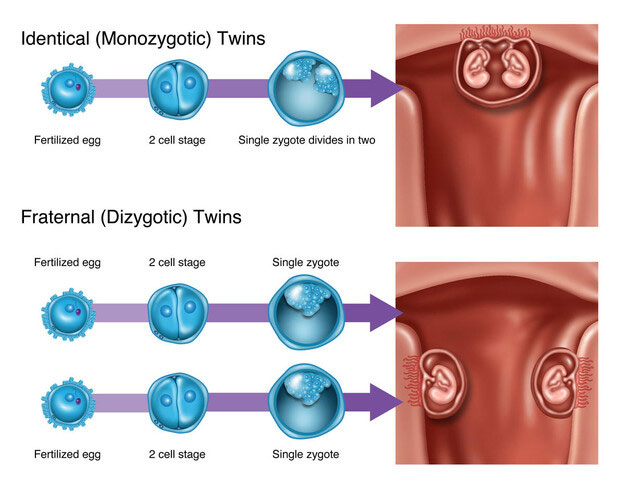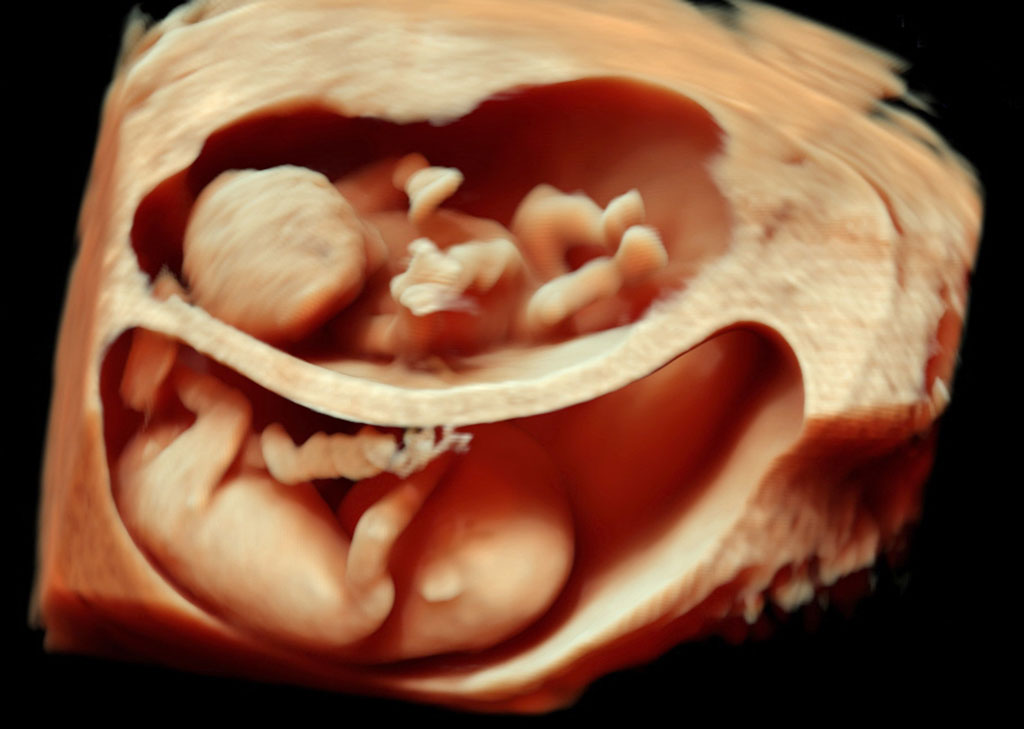Identical and non-identical twins form differently. Non-identical twins form when the woman ovulates more than one egg, and each egg gets fertilized, forming two separate zygotes. Alternatively, one zygote can become two people for up to 14 days after fertilization. This usually happens in one of two ways. Early in development, the entire embryo may split, or just a few days later once the blastocyst has formed, the inner cell mass may split.1
Become A Defender of Life
Your donation helps us continue to provide world-class research in defense of life.
DONATECharlotte Lozier Institute
Phone: 202-223-8073
Fax: 571-312-0544
2776 S. Arlington Mill Dr.
#803
Arlington, VA 22206
Twins

Scientists can infer when identical twins formed by observing the arrangement of the embryonic membranes such as the chorion and amnion. The amnion is a thin, tough sac surrounding the embryo and holding the amniotic fluid. The chorion surrounds the amnion, supplying it with nutrients. The chorion develops from the embryo’s cells and is responsible for absorbing nutrients and oxygen from the maternal blood in the placenta.
- Identical twins that likely split around blastocyst hatching, around 4-5 days after conception: These twins have two different amniotic sacs, two chorions and two placentas. Roughly one-third of identical twins form this way.
- Identical twins that likely split between days 4-8 after conception: These twins have two different amniotic sacs, but they share one chorion and one placenta. This can pose risks if the placenta and blood vessels start favoring one twin over the other. Roughly two-thirds of identical twins from between 4 and 8 days after conception.2
- Identical twins that likely split from days 9-13 after conception: These twins share one amniotic sac, one chorion and one placenta. Only 1-2% of all twins split this late in development. These twins have the additional risk of tangling their umbilical cords.3
Despite risks during intrauterine development, twins that share a chorion did not significantly differ from twins who had their own chorion when tested for neurodevelopmental outcomes at two years old.4










